Exciting New Releases: ZD Toys Collection
Exciting New Releases: ZD Toys Collection
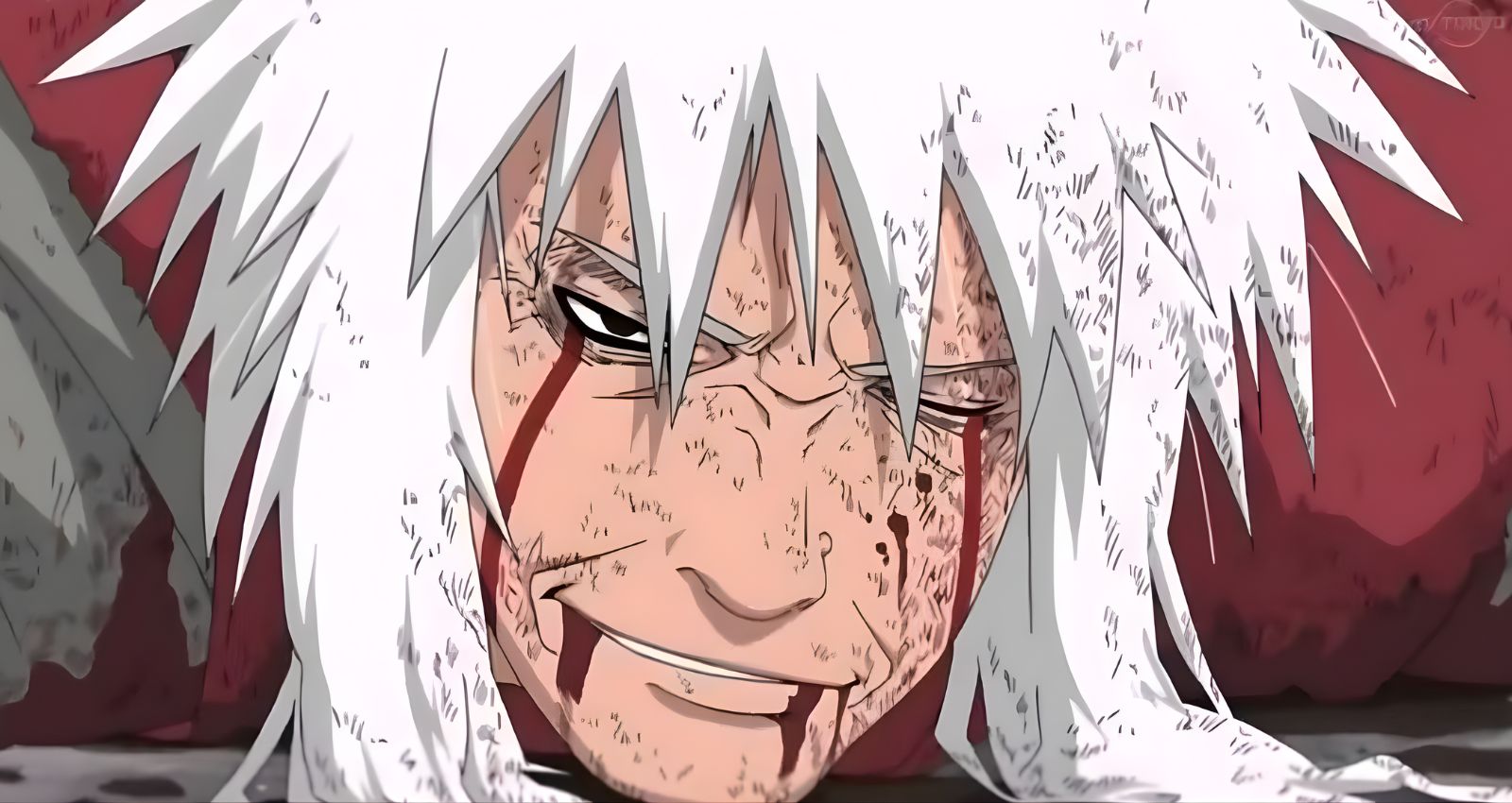
Anime’s Saddest Deaths: The 10 Moments Fans Never Forget
November 13, 2025 11 min read
In the vast cosmos of anime, there are moments that don’t just tug at your heart — they shatter it. Some character deaths carve themselves so deeply into the viewer’s memory that they linger long after the screen fades to black. These are the scenes where fiction slips its boundaries, where animated faces and imagined worlds suddenly feel painfully, achingly real.
Whether it’s the selfless sacrifice of a beloved hero, the quiet tragedy of a misunderstood villain, or the devastating loss of an innocent caught in fate’s crossfire, anime’s most emotional deaths remind us of life’s fragility and the raw, unfiltered spectrum of human feeling. They reshape characters, reshape stories… and sometimes, reshape us.
There are countless such moments scattered across the anime multiverse — unforgettable, iconic, soul-piercing.
This blog dives into the ones that defined a generation of fans and continue to leave a mark on hearts around the world.
10. Erwin Smith (Attack on Titan)
Season 3, Episode 18
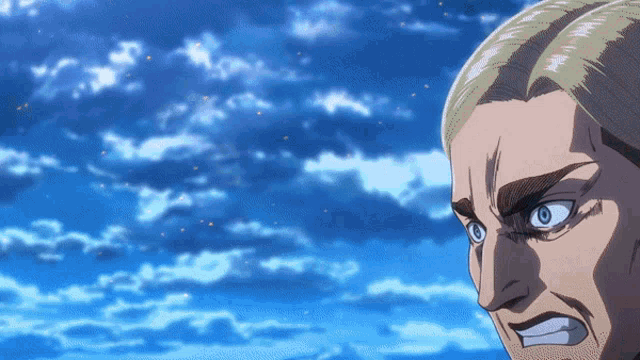
Few deaths in anime hit as brutally as Erwin Smith’s in Attack on Titan. A man defined by unshakeable resolve, strategic genius, and a relentless hunger for truth, Erwin wasn’t just the commander of the Survey Corps — he was its heart. Every soldier who rode under his banner believed in one thing above all else: if Erwin said charge, you charged.
And nowhere is that trust more agonizingly tested than in the Battle of Shiganshina.
Facing the overwhelming might of the Beast Titan, Erwin makes an impossible choice — a decision only a true leader could make. With death guaranteed, he rallies his hopeless, terrified soldiers into one last, thunderous charge. His voice cracks the air, not with fear, but with purpose. With a future he knows he’ll never see.
It’s not courage. It’s acceptance.
It’s sacrifice.
It’s Erwin’s final gamble for humanity.
As he falls, carried away by the very nightmare he charged into, the weight of his life — the dreams he abandoned, the truths he died chasing — crashes over the audience. The moment forces us to confront the impossible burdens he bore: the people he led to their deaths, the choices he could never escape, and the hope he kept alive for humanity at the cost of his own soul.
Erwin’s death isn’t just heartbreaking.
It’s heroic tragedy at its purest — the end of a leader who gave everything he had, including the dreams that once defined him, for a humanity that may never know the depth of his sacrifice.
9. Koro-Sensei (Assassination Classroom)
Season 2, Episode 23
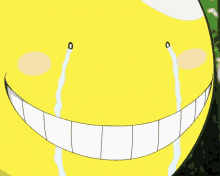
Few anime deaths are as beautifully devastating as the passing of Koro-Sensei, the so-called “Unkillable Teacher” whose bright grin and tentacled form hid a heart larger than life itself. What began as a bizarre premise — a class of misfits tasked with assassinating their own teacher — slowly transformed into one of the most heartfelt stories about growth, purpose, and the power of connection.
Over time, Koro-Sensei becomes more than a target. He becomes a mentor.
A guardian. A source of kindness, wisdom, and unwavering support.
By the final arc, the students of Class 3-E aren’t just assassins — they’re a family shaped by his lessons.
And then comes the moment they’ve been dreading since the very beginning.
In the gut-wrenching climax, the class gathers around Koro-Sensei as he accepts his fate with grace, pride, and love. Their mission must be completed, and he refuses to let anyone else bear the burden. As they deliver the final blow, hands trembling, the classroom that once overflowed with laughter and mischief becomes a chamber of heartbreak.
The grief is raw.
The silence is suffocating.
The bond they forged — teacher and students, assassin and target — culminates in a farewell that breaks every unspoken rule of anime storytelling.
Koro-Sensei’s death is a masterclass in emotional storytelling: a reminder to cherish the people who shape us, to value the lessons we inherit, and to understand that even the strangest connections can leave the deepest marks.
8. Obito Uchiha (Naruto: Shippuden)
Episode 471
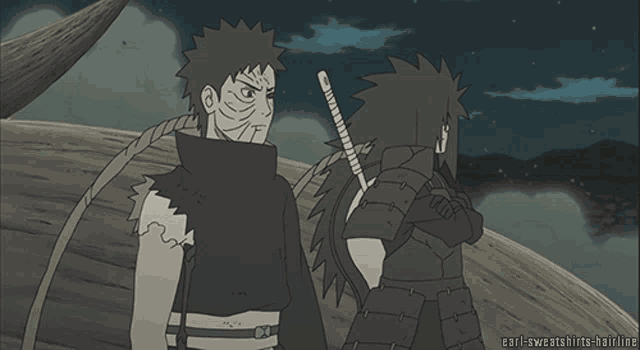
In a world as chaotic and war-scarred as the Shinobi Nations, Naruto: Shippuden built its legacy on trauma, resilience, and the thin line between hero and villain. Few characters embody that tragic duality more poignantly than Obito Uchiha.
Once a bright, goofy, warm-hearted boy who dreamed of becoming Hokage, Obito’s life splintered the day fate tore Rin away from him. That single heartbreak — that unbearable wound — reshaped him from a hopeful shinobi into the mastermind of the Fourth Great Ninja War. Under the weight of Madara’s influence and his own grief, Obito sought peace through the Infinite Tsukuyomi, a twisted dream where suffering could no longer exist… because reality itself would end.
And yet, even as an antagonist, Obito remained painfully human.
His rivalry-turned-brotherhood with Kakashi, his lost love for Rin, and his shattered belief in the shinobi system all made him a villain you couldn’t dismiss — one whose motives you could understand, even if you feared the consequences.
By the time Obito’s redemption arc reaches its climax, the mask has long since fallen away, revealing the broken, longing boy beneath the monster the world came to know. His death, quiet and emotionally charged, hits like a whisper through the battlefield — a reminder of who he truly was, and who he could’ve been.
7. Kozuki Oden (One Piece)
Episode 974
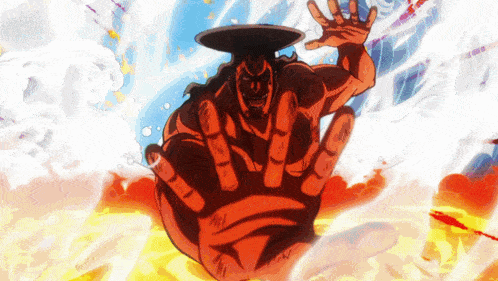
Few deaths in One Piece strike with the same brutality, heartbreak, and mythic weight as Kozuki Oden’s. A man larger than life — samurai, adventurer, heir, leader — Oden wasn’t just beloved; he was the blazing spirit of Wano itself. Which is what makes his end so excruciating to witness.
Unlike most anime deaths, Oden’s wasn’t swift, merciful, or sudden.
It was punishment.
It was spectacle.
It was torture.
Sentenced to be boiled alive for a full hour, Oden endured one of the most agonizing executions ever depicted in anime. Every second felt like an eternity. Every moment tested the limits of his body and soul. Yet he stood — literally — bearing the weight of his retainers above him, shielding them from death with nothing but his own burning flesh and unbreakable will.
It wasn’t just a death.
It was a final act of defiance.
Oden died with everything still at stake — his wife imprisoned, his children hunted, his country in chains, his dream of opening Wano’s borders left incomplete. These unfinished hopes give his demise an almost Shakespearean tragedy, transforming him from a great warrior into an immortal symbol of sacrifice.
His execution didn’t just break hearts.
It set the stage for everything that followed — the rebellion, the war in Wano, and the rise of the next generation who would carry his legacy forward.
Kozuki Oden’s death is one of anime’s most painful farewells: brutal, heroic, unforgettable.
6. Escanor (Seven Deadly Sins)
Season 4, Episode 20
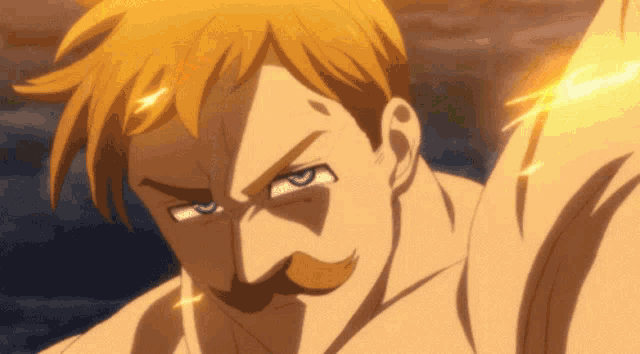
Among the legends of Seven Deadly Sins, few shine as brilliantly — or burn as tragically — as Escanor, the Lion’s Sin of Pride. A man whose power soared with the sun and dwindled to fragility at night, Escanor embodied contradiction: frail yet mighty, gentle yet godlike, timid yet unstoppable.
But when the world needed him most, he did what only a true hero could.
In the final battle, Escanor pushes past every limit, converting his own life force into raw, blazing power. Each moment he stands in the sun’s embrace is another piece of his life slipping away — and he knows it. Yet he fights anyway. Not for glory. Not for pride. But for his friends, for the family he found among the Sins.
When the enemy finally falls, the cost of victory becomes heartbreakingly clear.
Escanor’s body begins to fade — not in violence, but in quiet, radiant surrender. As he turns to ash and light, Merlin steps forward, offering him the gentlest farewell: a final kiss, drenched in grief and gratitude. The proudest man alive, who once appeared weak and unimpressive in his earliest days, exits the world as its brightest flame.
Escanor’s death isn’t just sad — it’s poetic.
A warrior who never ran from battle.
A man whose power came not from arrogance, but from love and devotion.
A hero who knew the price of saving his friends… and paid it willingly.
He didn’t simply die.
He blazed — and left the world brighter for it.
5. Kyojuro Rengoku (Demon Slayer)
Mugen Train
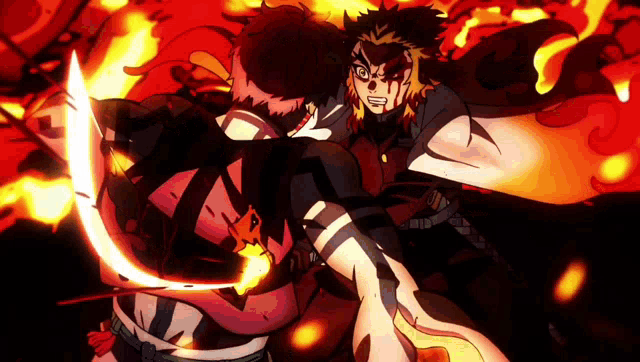
The death of Kyojuro Rengoku, the Flame Hashira, stands as one of the most soul-crushing moments in Demon Slayer. Even in a world where every breath could be a warrior’s last, fans dared to believe that someone as radiant, as unwavering, as alive as Rengoku might somehow defy the cruelty of fate.
But fate had other plans.
On the Mugen Train, Rengoku’s fire burns its brightest — and its final. In a battle that feels like a clash of gods, he unleashes everything he has against Akaza, an Upper Rank demon whose strength defies comprehension. Rengoku pushes past shattered bones, torn muscle, and fading breath, determined to land that final, decisive blow. Determined to protect the people behind him. Determined to win.
But even the strongest flame can be snuffed out.
Akaza escapes into the forest, fleeing the sunrise. And that injustice — that the monster who killed him survives — makes the moment cut even deeper. Rengoku dies not with vengeance, but with acceptance, pride, and a heart full of encouragement for the young demon slayers left behind.
His final words… his unwavering smile… his quiet reflection on his broken bond with his father…
They make his passing feel less like a defeat and more like the last warm light of a setting sun.
4. Setsuko
Grave of the Fireflies

There are sad anime moments… and then there is Grave of the Fireflies — a film that rips away fantasy, comfort, and escapism, leaving us face-to-face with the brutal truth of war. And at the center of this heartbreak stands Setsuko, one of the most tragic figures in animation history.
What makes her story so unbearable is not just the sorrow, but the reality. This isn’t a tale of magic or monsters — it’s a reflection of real children who lived, suffered, and vanished in the chaos of World War II.
After the firebombing tears their family apart, Setsuko and her older brother Seita cling to each other, desperate to survive in a world that has no mercy for the young. Together, they steal what food they can, fight illness, and hold onto the tiniest sparks of childhood innocence.
But innocence can’t fill an empty stomach.
Despite Seita’s desperate efforts, the meager scraps he finds aren’t enough. Setsuko’s health crumbles, her small body giving way to starvation and malnutrition. And in one of cinema’s most soul-shattering scenes, she dies quietly in her brother’s arms — a piece of watermelon still in her hand, a final taste of sweetness in a world that offered her none.
3. Portgas D. Ace (One Piece)
Episode 482

The death of Portgas D. Ace isn’t just a tragedy within One Piece — it’s one of the most emotionally devastating turning points in anime history. Born as the son of the Pirate King, Gol D. Roger, Ace carried a legacy the world condemned as a sin before he ever spoke his first word. The Navy saw him not as a person, but as a threat that needed to be erased — just like his father.
And so, they chose a public execution.
A spectacle.
An echo of history repeating itself.
But Ace wasn’t alone.
The entire Whitebeard Pirates — an army forged in loyalty — waged war against the world to bring him home. Fans held onto hope with every clash, every sacrifice, every desperate roar from Luffy.
And for a fleeting moment… that hope seemed justified.
Ace was freed.
Luffy reached him.
The impossible had happened.
But fate, cruel as ever, had one final twist.
When Admiral Akainu lunges to kill Luffy, Ace steps in without hesitation — shielding his little brother from a blow meant to end him. His sacrifice, fiery and fearless, mirrors the love he carried his entire life: unshakeable, unconditional, and fiercely human.
Ace dies cradled in Luffy’s arms, smiling through pain, thanking his brother for loving him.
And with that, a flame adored by millions is extinguished.
No One Piece fan reaches the end of Marineford without clinging to the desperate hope that Fire Fist Ace might somehow survive — that a character so full of style, strength, and mystery still has more to give, especially in unraveling the legacy of the “D.”
But his death stands as one of the series’ greatest emotional blows — a loss that reshaped Luffy, reshaped the world, and reshaped the hearts of fans forever.
2. Maes Hughes (Fullmetal Alchemist)
Episode 25
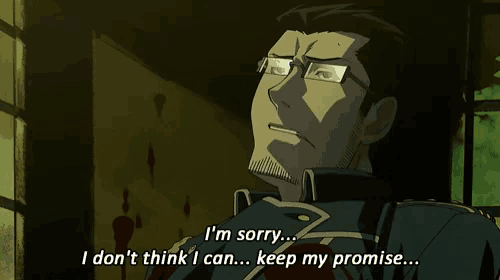
There are sad anime deaths… and then there is Maes Hughes — a moment so heartbreaking that anyone who gets through it dry-eyed is either made of stone or has survived Grave of the Fireflies one too many times. Hughes wasn’t just another side character; he was warmth personified. A loving husband, a doting father, and the rare soul in a cruel world who radiated kindness without effort.
Which is exactly why his death hurts so much.
In the shadows of conspiracy, Hughes is cornered — betrayed by forces he barely has time to understand. Even in his final seconds, wounded and terrified, his thoughts don’t turn to vengeance or regret. They turn to his daughter.
To her smile.
To the little girl he adored more than life itself.
He dies whispering love, not fear.
But the scene that truly breaks fans — the moment that knocks the air out of your chest — comes later. At his funeral, when his daughter, too young to grasp the permanence of death, pleads for her father to get up, to stop “sleeping,” to come home.
Her confusion.
Her innocence.
Her tiny voice calling out for a dad who will never answer again.
That’s the moment Fullmetal Alchemist stops being fiction and becomes something painfully, devastatingly real.
1. Jiraiya (Naruto: Shippuden)
Episode 133

If Naruto fans could plead for one impossible miracle from Masashi Kishimoto, it would be this:
Bring back Jiraiya.
Even for a moment.
Even as an Edo Tensei echo during the Fourth Great Ninja War.
But he never returned — and deep down, fans know why. Jiraiya’s death wasn’t just tragic. It was final. Brutal. Lonely. His grave was the deep, merciless sea.
Jiraiya wasn’t simply a mentor — he was Naruto’s father figure, his anchor, his guiding star. And for viewers, he felt like that one friend you could always rely on: warm, wise, mischievous, and endlessly kind. It’s impossible to think of Naruto without picturing Jiraiya right beside him, cheering him on, teasing him, believing in him long before anyone else did.
Which makes his death all the more devastating.
Facing Pain — a former student twisted by despair — Jiraiya fights with everything he has, pushing his worn body far beyond its limits. And even in his final breaths, surrounded by enemies and sinking beneath the waves, he’s thinking not of himself, but of Konoha. Of the future. Of the boy he believed would change the world.
With his last strength, he carves a code into a dying message — a clue that would ultimately save the Hidden Leaf Village.
His final gift. His final lesson. His final act of love.
Jiraiya’s death is a wound that never fully heals, one that reshaped the story, the characters, and the fans who grew up alongside Naruto. His legacy ripples through every victory Naruto achieves, every obstacle overcome, every moment of growth.
Anime has an unmatched way of touching the soul — reminding us that even in worlds filled with demons, pirates, shinobi, and titans, the most powerful battles are often emotional. These heartbreaking deaths stand as proof of how deeply animated stories can resonate: shaping us, moving us, and staying with us long after the tears dry.
From noble sacrifices to tragic goodbyes, these moments remind us why anime isn’t just entertainment — it’s a shared experience across generations of fans. And whether you're reliving these scenes or discovering them for the first time, their emotional impact is timeless.
Before you head out, make sure to explore the latest Anime, Marvel, DC, Transformers, LEGO, and more collectibles available at up to 40% OFF — only at Superhero Toystore. Power up your collection with the heroes and worlds you love.
Subscribe
Sign up to get the latest on sales, new releases and more …
